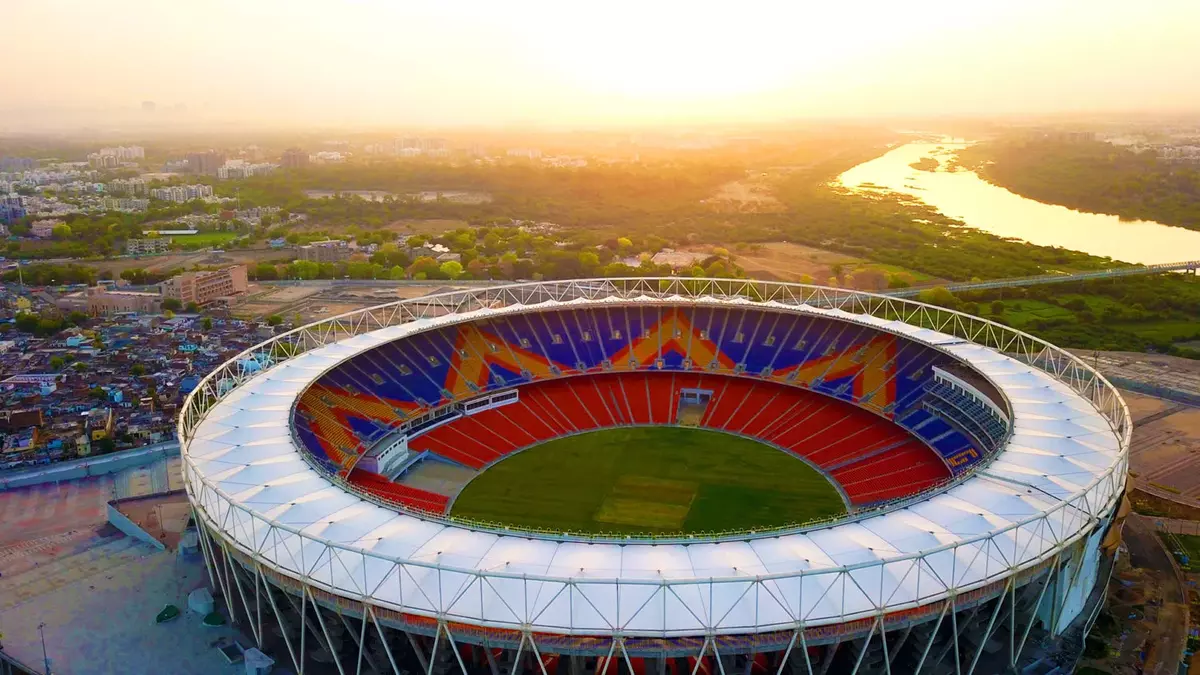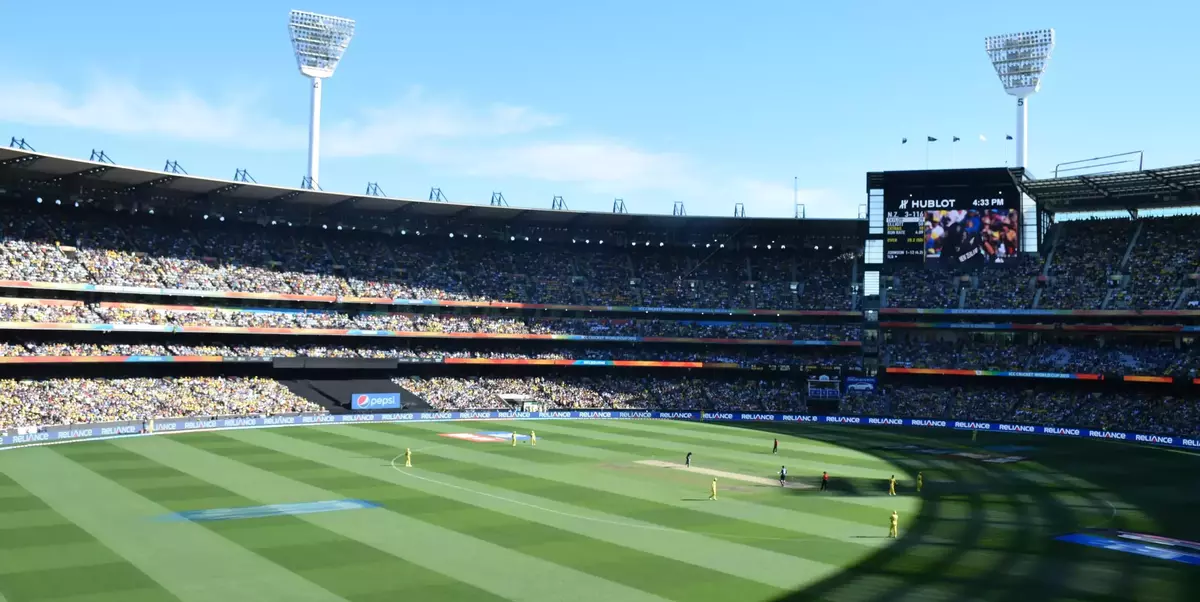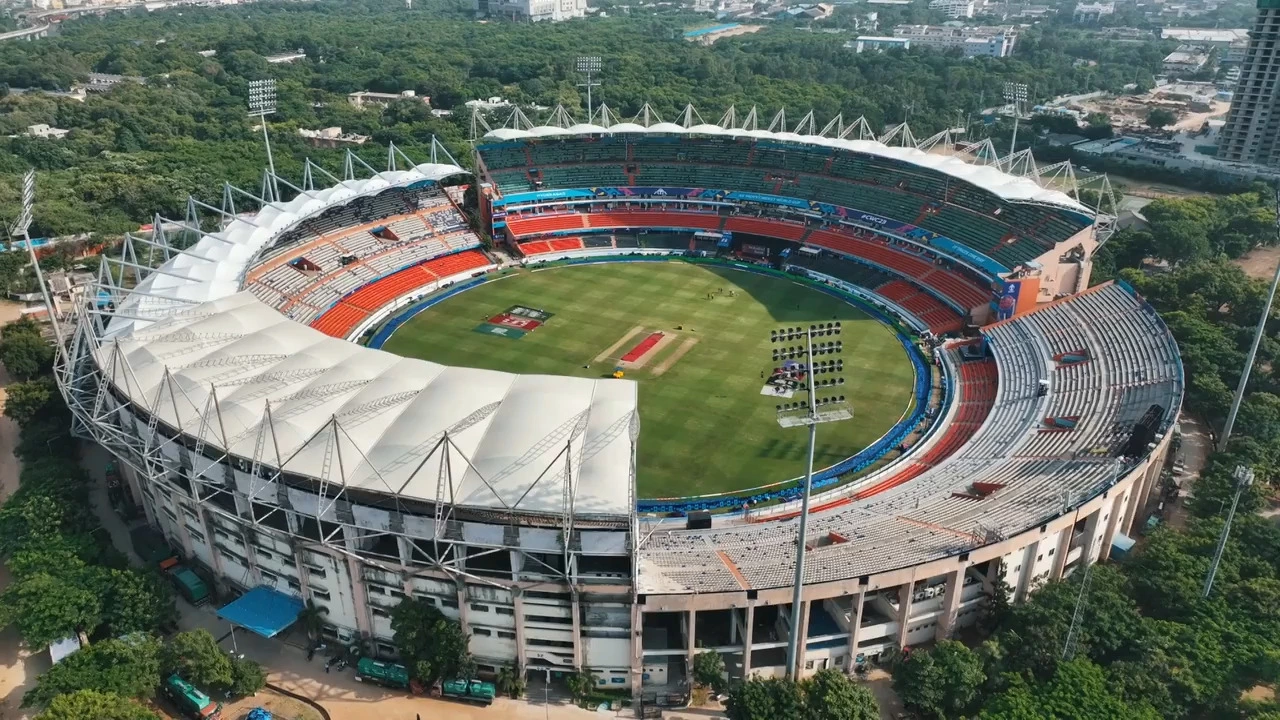Largest Cricket Stadium in the World: Top 5 Biggest Cricket Grounds
Often referred to as the “gentleman’s game“, cricket has a rich history. The significance of the largest cricket stadium in the world cannot be understated.
These colossal arenas not only serve as venues for thrilling matches but also symbolize the passion, dedication, and love that fans and players alike have for the sport.
Get up to ₹20,000 Bonus Every Week!
Get up to ₹20,000 Bonus Every Week!
- UPI, Paytm, gPay & PhonePe withdrawals
- Win 1000x Bet Amount!
- Available in four different Indian languages
On this article, we will explore the top 5 biggest cricket stadiums in the world, the stories behind it, the capacity, and anything in between.
Summary & Key Takeaways
ShowThe Story Behind 5 Largest Cricket Stadium in the World

The echoing roars of fans, the electrifying atmosphere, and the unforgettable moments – all find a home in the largest cricket stadium in the world.
These stadiums, with their vast capacities, are not just concrete structures but temples of cricket where legends are made. Here are the top 5 biggest cricket stadiums in the world:
1. Narendra Modi Stadium, India

The Narendra Modi Stadium, situated in Ahmedabad, India, is not just an iconic cricketing venue but also holds the title of being the largest cricket stadium in the world.
When one wonders, “which is the largest cricket stadium in the world?” or “world biggest cricket stadium in which country?, the answer invariably points to this monumental structure in India.
With a seating capacity of 132,000 spectators, it stands as the biggest cricket stadium in India and the world.
This India’s biggest cricket stadium boasts a seating capacity of 132,000 spectators, making it the largest cricket stadium in the world.
Over the years, its capacity has evolved, reflecting its status as the largest stadium in India in terms of seating.
The Narendra Modi Stadium has a rich history, standing on the same plot where the Sardar Patel Stadium was present from 1982 to 2015.
This India’s biggest stadium hosted significant matches during the 1987, 1996, and 2011 ICC World Cups.
The Gujarat Cricket Association (GCA) undertook the mammoth task of rebuilding this stadium to create a state-of-the-art facility, further solidifying its position as the biggest cricket stadium in India.
The construction, which spanned from December 2016 to February 2020, cost around ₹800 crore (US$100 million).
Equipped with modern amenities, including 76 corporate boxes, a 55-room clubhouse, an Olympic size swimming pool, and four dressing rooms, it stands as a testament to India’s commitment to world-class cricketing facilities.
Among the many events it has hosted, the “Namaste Trump” event in 2020 and its first Test match against England in 2021, which was a day-night test game, are notable. Moreover, this stadium is set to host the final of the 2023 ICC World Cup.
In 2021, in honor of the current Prime Minister of India, Narendra Modi, the stadium was renamed, reflecting his contributions as the former president of the GCA and the Chief Minister of Gujarat.
Strategically located in Motera, Ahmedabad, with three entry points and metro line accessibility, it’s a beacon for cricket enthusiasts wondering “which is the largest cricket stadium in the world?“.
2. Melbourne Cricket Ground (MCG), Australia

The Melbourne Cricket Ground, commonly referred to as the MCG or “The ‘G“, is a monumental sports stadium located in Melbourne, Victoria, Australia.
Managed by the Melbourne Cricket Club, the MCG is a significant emblem in the list of the world’s largest stadiums.
It holds a prominent position as the 2nd largest cricket stadium in the world, following the Narendra Modi Stadium.
The MCG, being one of the top 5 biggest cricket stadiums in the world, boasts a seating capacity of 100,024. This makes it the largest cricket stadium in world outside of India.
The field size is expansive, measuring 171 meters x 146 meters, further emphasizing its stature as a world biggest stadium in terms of playing area.
Founded in 1853, the MCG has been the epicenter of numerous iconic sporting events. Notably, it hosted the first Test match in 1877 and the first One Day International in 1971.
Its association with Australian rules football since 1859 has also made it a central venue for Australian Football League (AFL) matches, including the AFL Grand Final.
Over the years, the MCG, being a world biggest cricket stadium, has undergone several renovations to maintain its stature.
The first grandstand was a wooden structure built in 1854. Various stands, including the Southern Stand and the Olympic Stand, were added over the years, enhancing its position as one of the largest cricket stadiums globally.
Apart from cricket, the MCG has hosted a plethora of major sporting events. Solidifying its position in the world’s largest stadium category for hosting diverse events.
Including the 1956 Summer Olympics, multiple Cricket World Cups, and the 2006 Commonwealth Games.
Meanwhile, the MCG is equipped with modern amenities, including 109 executive suites.
In 1985, light towers were installed, allowing for night football and day-night cricket games, catering to the demands of a world biggest cricket stadium.
Beyond sports, the MCG has been a venue for concerts and other cultural events, showcasing its versatility beyond just being the largest cricket stadium.
Strategically located in Yarra Park, Melbourne, the MCG is part of the Melbourne Sports and Entertainment Precinct, making it easily accessible and a central landmark in the city.
3. Eden Gardens, India

Eden Gardens, located in Kolkata, India, stands as a beacon in the realm of cricket.
Often referred to as the “Mecca of Indian Cricket“, this venue has been the backdrop for countless iconic moments in cricket history, solidifying its place as one of the largest cricket stadiums in the world.
Eden Gardens, once the biggest cricket stadium in world in terms of seating capacity, currently accommodates 68,000 spectators.
However, before its 2010 reconstruction, it held the title of the biggest stadium in India, with a capacity of 100,000.
This made it not only the largest cricket stadium in India but also a significant contender for the title of the world’s biggest stadium cricket venue.
The stadium’s record attendance reached an astounding 110,564 during the 1996 Cricket World Cup Semi-Final between India and Sri Lanka.
Established in 1864, Eden Gardens is not only the oldest but also the largest cricket stadium in India.
It has been the venue for many significant matches, including the first Test match in 1934 against England and the first One Day International in 1987 against Pakistan.
The origins of its name are believed to be linked to the Eden sisters, Emily and Fanny, of Lord Auckland, the Governor-General of India from 1836 to 1842.
The stadium underwent a major renovation in 2010-11, which led to a reduction in its seating capacity, yet it remains India’s biggest cricket stadium in terms of historical significance.
Eden Gardens has been a preferred venue for major international tournaments, including the Cricket World Cup, World Twenty20, and Asia Cup.
In 1987, it became the second stadium globally to host a World Cup final.
The 2016 ICC World Twenty20 final was also held at this iconic venue, further emphasizing its stature as one of the largest cricket stadiums in the world.
Often described as “cricket’s answer to the Colosseum“, Eden Gardens holds a special place in the hearts of cricket enthusiasts.
It’s not just a stadium; it’s an emblem of India’s rich cricketing heritage. The stadium has also been referred to as the “Lord’s of the subcontinent“, emphasizing its stature in the cricketing world.
Strategically located in the Maidan area of Kolkata, Eden Gardens is in close proximity to the State Secretariat and the Calcutta High Court, making it a central landmark in the city and India’s biggest stadium in terms of cultural significance.
4. Shaheed Veer Narayan Singh International Cricket Stadium, India

The Shaheed Veer Narayan Singh International Cricket Stadium, also known as the Nava Raipur International Cricket Stadium, is a significant cricket venue located in Raipur, Chhattisgarh, India.
This stadium has etched its name in the annals of cricketing history, not just in India but on a global scale.
The stadium boasts an impressive seating capacity of 65,000, making it one of the largest cricket stadiums in the world. It stands as the third largest cricket stadium in India and the fourth-largest globally.
When pondering over “which is the biggest stadium in the world” in terms of cricket, this venue certainly comes into the conversation.
Its vast capacity positions it prominently in the list of world’s biggest stadium for cricket.
Established on 11 September 2008, the stadium has rapidly gained prominence in the world’s largest cricket stadium circuit.
It hosted its first international cricket match, an ODI between India and New Zealand, in 2023, which India won.
The construction of the stadium began in 2006 and was completed in 2008. With state-of-the-art facilities, it ensures a world-class experience, making it a contender in the world biggest stadium cricket category.
Apart from international matches, the stadium has been a venue for various editions of the Indian Premier League (IPL).
It has also hosted matches during the 2014 Champions League Twenty20, further solidifying its place as a significant world largest stadium for cricketing events.
The stadium is named after Veer Narayan Singh Binjhwar, a landlord from Sonakhan who spearheaded the 1857 war for Indian independence in Chhattisgarh.
When one wonders, “world biggest cricket stadium in which country?“, India, with venues like this, often comes to mind.
Situated in sector-3 of Naya Raipur, it’s in proximity to the Swami Vivekananda Airport, making it a central landmark in the city.
The stadium has received accolades from various cricketing legends. Sunil Gavaskar rated it as one of the best stadiums in the country, emphasizing its stature in the world’s largest cricket stadium category.
5. Rajiv Gandhi International Cricket Stadium, India

The Rajiv Gandhi International Cricket Stadium, located in Hyderabad, Telangana, India, is a monumental structure in the cricketing world.
Named after the former prime minister of India, Rajiv Gandhi, this stadium is often mentioned when discussing the largest cricket stadium in the world.
With a seating capacity of 60,000, the Rajiv Gandhi International Cricket Stadium is not only among the biggest cricket stadiums in the world but also a contender in the list of the largest stadium in the world.
Spanning across 15 acres of land, it’s a marvel for cricket enthusiasts and stands as a testament to India’s place in the world’s biggest cricket stadium category.
Established in 2003, the stadium has been a focal point for major cricketing events, making its mark as a world largest cricket stadium.
Before its inception, matches in Hyderabad were hosted at the Lal Bahadur Shastri Stadium.
The vision for a new, grander stadium was driven by the desire to have a venue that could rival the biggest cricket stadium in world by boundary.
The construction and development of such a significant stadium were monumental tasks.
The government of erstwhile Andhra Pradesh played a pivotal role in ensuring that Hyderabad had a stadium that could be counted among the world’s biggest stadium cricket venues.
Major Events: As a hub for international cricket, it has hosted numerous matches, further solidifying its reputation as one of the biggest cricket stadiums in the world.
It was a chosen venue for the 2023 Cricket World Cup and has been the home ground for the Sunrisers Hyderabad IPL team, showcasing IPL’s grandeur.
Nestled in the eastern suburb of Uppal, the stadium is a blend of modern amenities and accessibility, making it a prime location for hosting international matches in the world’s biggest cricket stadium category.
Its accolades are many, with the stadium being recognized for its pitch and ground conditions.
Memorable cricketing moments, such as milestones achieved by legends like Sachin Tendulkar, have been witnessed here, adding to its legacy as a biggest cricket stadium.
The ends of the stadium, named Pavilion End and North End, pay homage to cricketing legends, with the North End named after VVS Laxman, highlighting the stadium’s commitment to recognizing cricketing excellence.
Wrapping Up: The Role of Largest Cricket Stadium in the World
These stadiums, with their vast capacities and state-of-the-art facilities, will always remain iconic in the annals of cricket history.
Claim up to ₹15,000 Welcome Bonus Now
Claim up to ₹15,000 Welcome Bonus Now
- Fastest Indian Rupees Withdrawals
- Win 1000x Bet Amount!
- 300% Welcome Bonus up to ₹10,000
Will these mammoth structures continue to be the epicenters of major tournaments, or will the focus shift to more intimate venues?
As cricket continues to evolve, with formats like T20 gaining immense popularity, what role will the largest cricket stadium in the world play in shaping the sport’s future?







